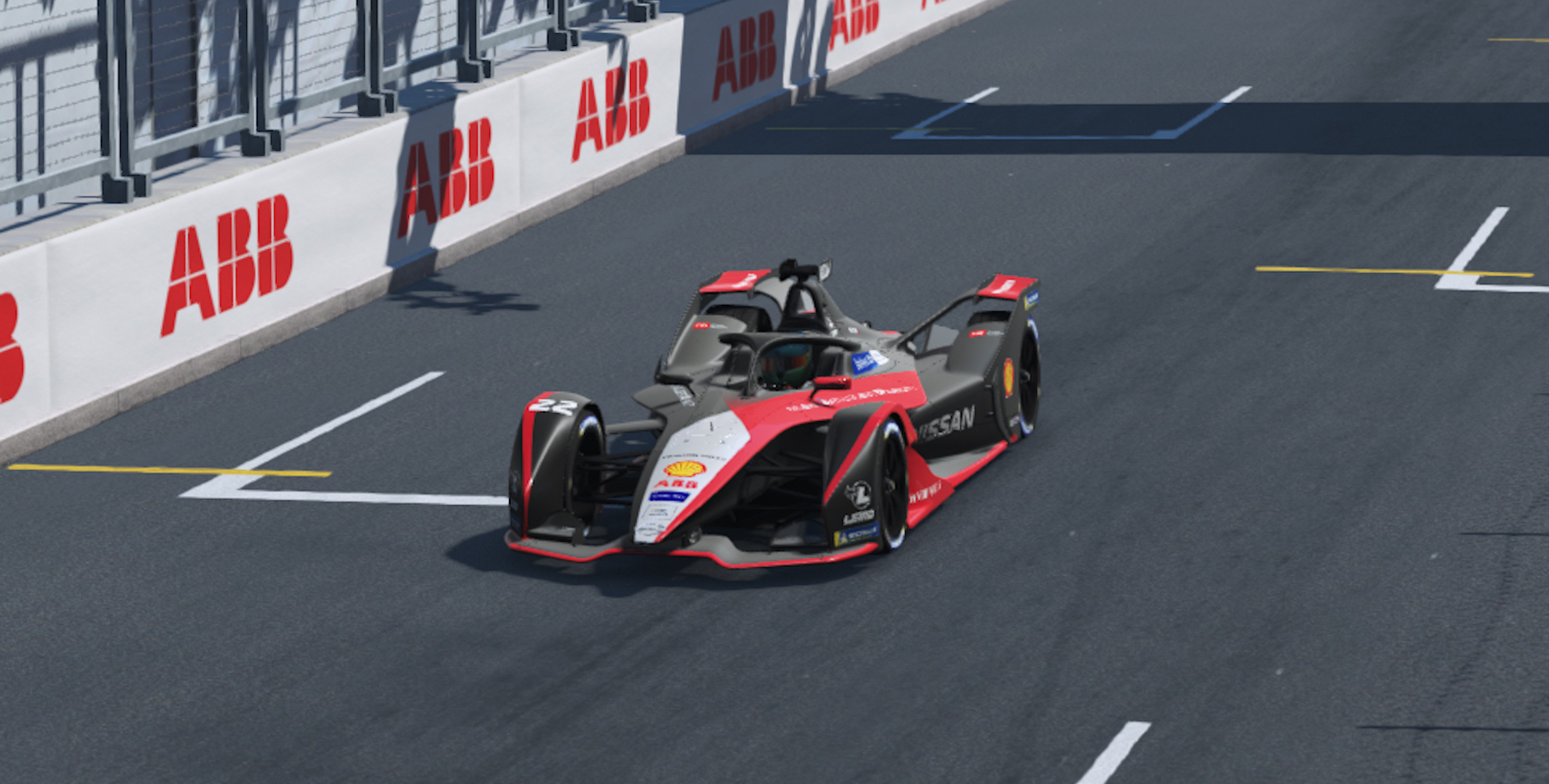

We may earn revenue from the products available on this page and participate in affiliate programs. Learn more ›
If you didn’t know better, you’d think that virtual racing is infinitely easier than the real deal. After all, there’s essentially no danger involved and you can compete against the world’s best while wearing the same t-shirt for a third consecutive day. However, when you’re a professional driver with a legitimate team like Formula E’s Nissan e.Dams, it’s far more complicated. Let series champion Sebastien Buemi and his teammate Oliver Rowland explain.
Buemi is a seasoned racer in everything from open-wheel cars to championship-winning endurance prototypes. He’s raced in various series, accumulating 55 total Formula 1 starts with Toro Rosso, and he’s also a two-time Le Mans 24-Hour champion. His resume isn’t bad, in other words.
Rowland, who made his Formula E debut last season, is a former member of the Williams F1 young driver program who also has experience in all forms of motorsport. From driving for Manor in the World Endurance Championship to winning the Formula Renault UK championship in 2011, he’s no stranger to high-speed action and the kind of discipline required in order to succeed in motor racing.
Buemi completed the 2018/2019 Formula E season as championship runner-up to Jean-Eric Vergne, while Rowland finished in a respectable 10th—not bad for his rookie season, which also happened to be Nissan’s first in Formula E.
Regardless of their past experiences, both drivers admit that sim racing is on another level. That’s where they now find themselves as part of Formula E’s Race at Home Challenge, which like most other forms of racing has moved to the virtual world, for now, thanks to the pandemic.
First off, the sim rig is completely different than a full-fledged racing cockpit. While some have fully customized setups catered to their personal preferences, others are dealt a different card.
Buemi and Rowland, for example, are running a Formula E-issued Playseat rig in the series’ upcoming Race From Home Challenge. While the equipment is certainly up to snuff, other racers with their own sim setups have tailored environments with full motion and force feedback. That’s the advantage of being a sim racing regular—you’ve got more seat time in a rig that’s made specifically for you, while those who are newer to eSports are adapting with unfamiliar equipment. It’s worth clarifying that these rigs were provided by the series not only so drivers didn’t have to source their own equipment during these trialing times, but also to enforce a leveled playing field.
Rowland explained to The Drive and other outlets in a video call, “It’s all very new and I’ve done some races aside from Formula E as well and it’s actually extremely difficult and a bit mind-blowing how good some of the [professional sim racers] are.”
Much of this boils down to their experience, of course, but those with more advanced equipment have an inherent advantage. As we’ve seen, though, you don’t need a five-figure rig to do well in a sim race.


Then, to stream each race as virtually everyone does at the pro-level, it requires another set of obstacles that drivers usually aren’t responsible for.
“We have a webcam, and then you have to connect yourself to Zoom because you have the race briefings with all the drivers,” Buemi said. “There is so much software you have to be running at the same time.”
“If I didn’t have help from someone at Nissan, it would’ve taken me months. It’s pretty impressive, all the stuff you need to make sure you can race with those guys live. I’m really impressed with all the technology, to be honest,” he added.


Also, the perception of speed is far different when you’re looking through a screen rather than an open cockpit. Even when you feel like you’re setting a good lap time, missing feedback can cause you to be half-a-second off the leaders. Remember, these are pro racers who have experience in everything from Formula 1 cars to Le Mans-winning prototypes—both Buemi and Rowland have a long list of real-life accomplishments.
“I feel like I’m driving a very, very good lap and then I miss four- or five-tenths to some people and I actually get really mad,” Rowland joked. “I think my girlfriend hates me at the moment because I come off it literally so annoyed. It’s very difficult because instead of getting cues of feeling and what you can see, all you’ve got is a screen. It’s hard to accept that you feel you’re driving a good lap but actually there’s so much more time left on the table.”
It’ll be up to the pair of Nissan e.dams drivers to adapt to these changes during Saturday’s Race From Home Challenge, which will be run on the rFactor 2 sim platform. They’ll be competing at the Hong Kong ePrix circuit, or at least a virtual version of it, in support of UNICEF with a full field of drivers also trying their hand at sim competition.
To watch, tune into Formula E’s YouTube channel or join in on the streaming fun via various Twitch streams hosted by drivers and teams alike. It’ll also be broadcasted on Fox Sports 1 at 10:30 a.m. EST.
Got a tip? Send us a note: tips@thedrive.com
